
Julien Garcia Guitars Interview 1 Background
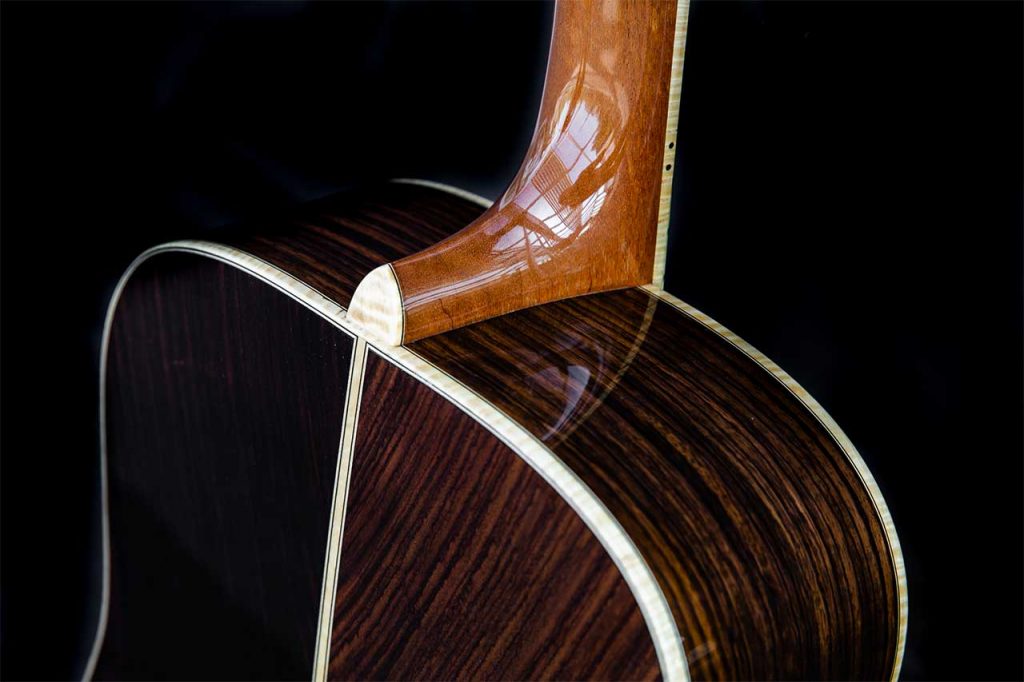
Julien Garcia Guitars Interview 1 Background
Lisez cet article en français : https://luthiers.com/julien-garcia-luthier-interview-1-background
Julien Garcia Luthier -For those who don’t know you yet, can you tell us about your background ? Did you attend a lutherie school ? Did you follow a training with famous makers ?
Were you a musician before becoming a luthier ? And, by the way, do you still find time to play music with your work as a luthier ?
I started my own workshop officially in July 2015
I have a degree in physical measurements, I worked a few years in the field of industrial and commercial refrigeration before starting my reconversion to realize my old dream which is to build guitars.
This reconversion was initiated at the end of 2012 when I met my future trainer, the luthier Claude Fouquet.
I followed my training in his workshop located in Puimisson in the Hérault during 2013.
I officially started my own workshop in July 2015 after first creating several models to build up a small range of instruments.
I started playing guitar at the age of 11 with classical guitar then as a teenager I switched to electric guitar which seemed much “cooler” at the time. I have never stopped playing either electric or acoustic guitar even if lutherie has actually taken me away from guitar playing.
I try to maintain a minimum level that allows me to judge my own instruments as objectively as possible and this is also a considerable asset when it comes to tuning a guitar.
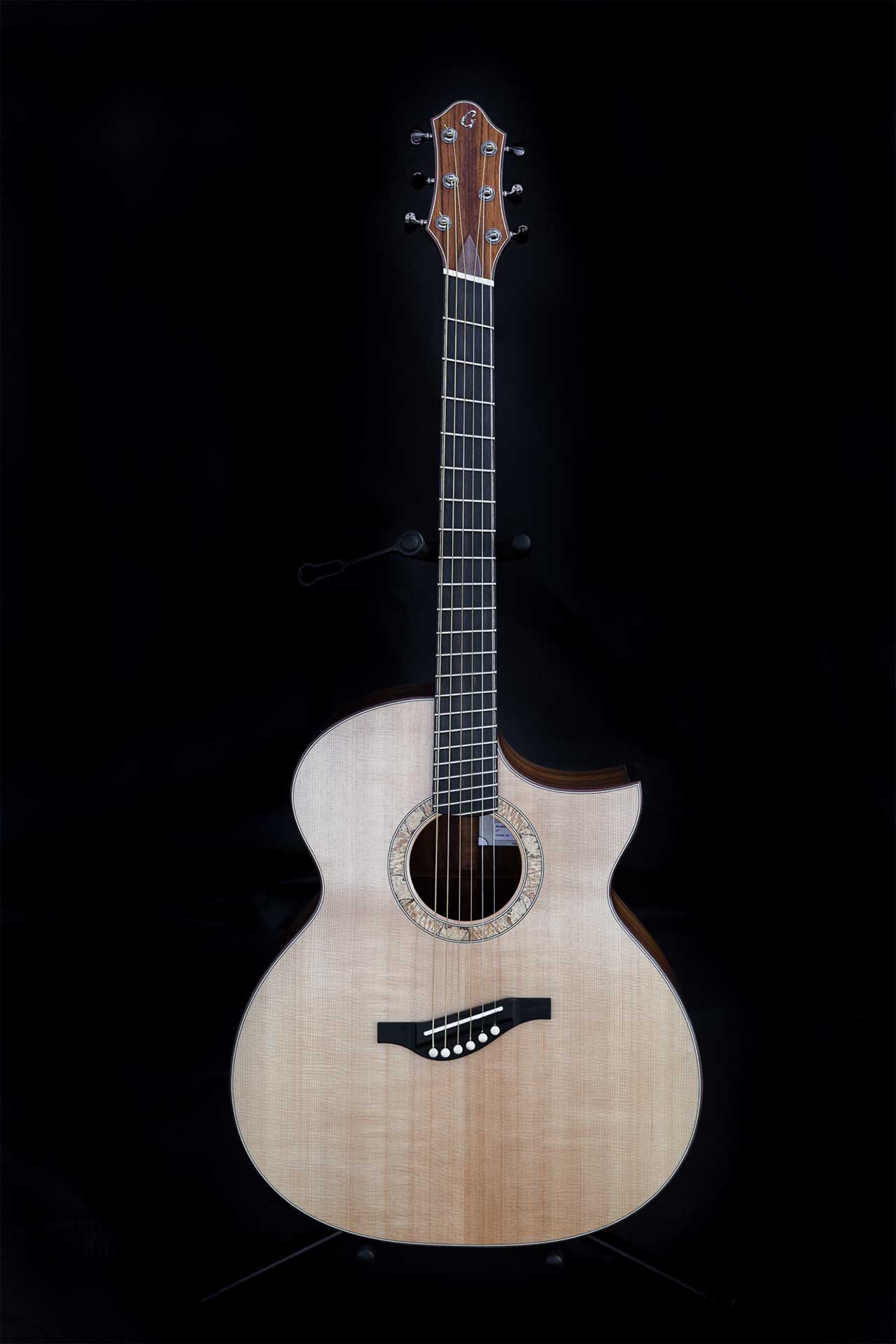
Julien Garcia Luthier – Can you tell us what you consider to be the most important thing when you design a guitar?
The coherency of the object in relation to the type of guitar it is about.
The general look of the instrument of course but especially the bracing plan for the sound and also what touches the ergonomics as for example the choice of the tuning forks in the case of a multiscale model, the width of the neck, the spacing of the strings, the profile of the neck, the radius of the fingerboard, etc…
I always make a 1:1 scale paper plan in the old fashioned way with a pen and a ruler and once I am satisfied with the lines of the guitar and the coherence of the bracing, I start the making of all the jigs and special tools needed for the construction.
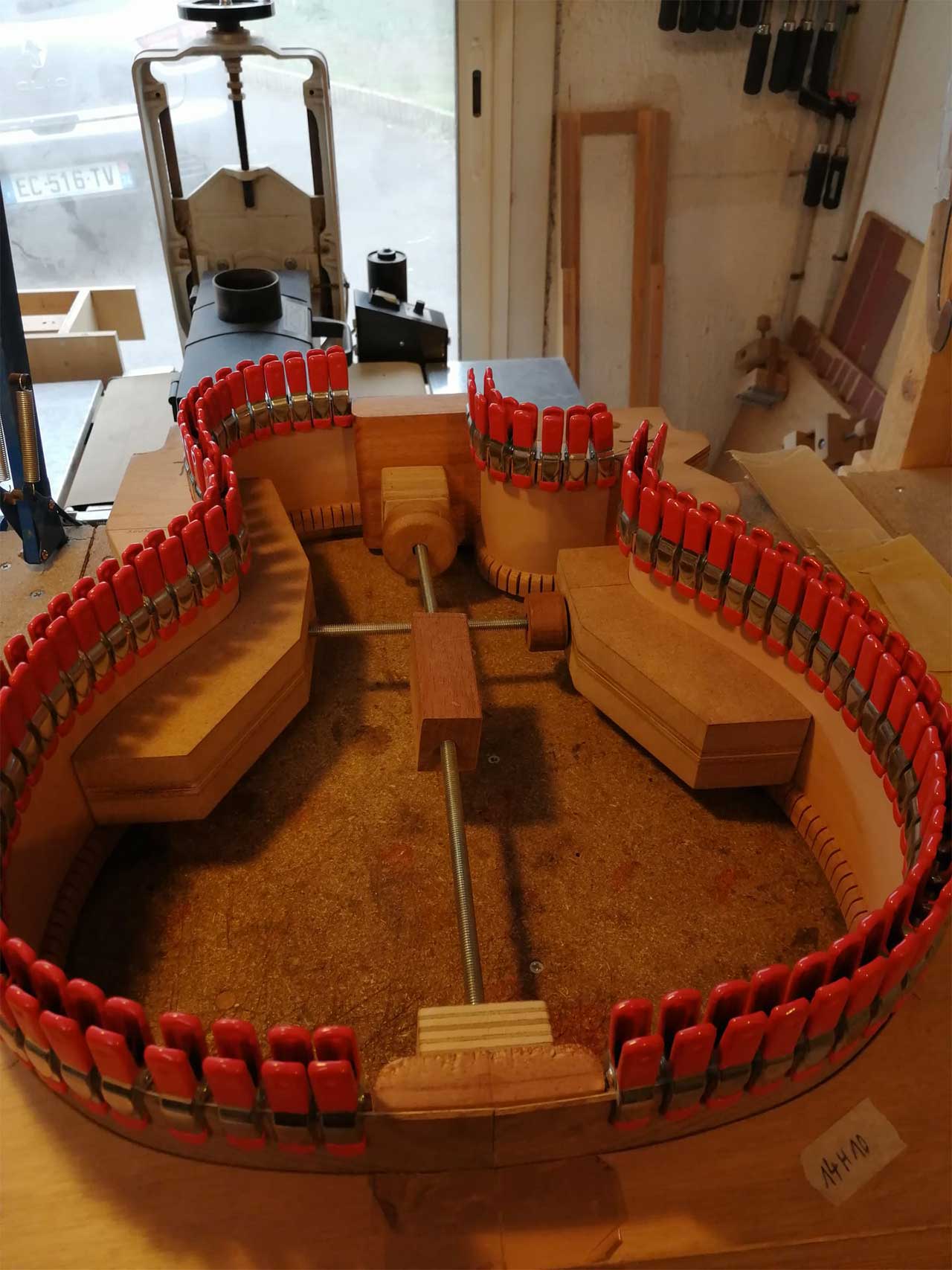
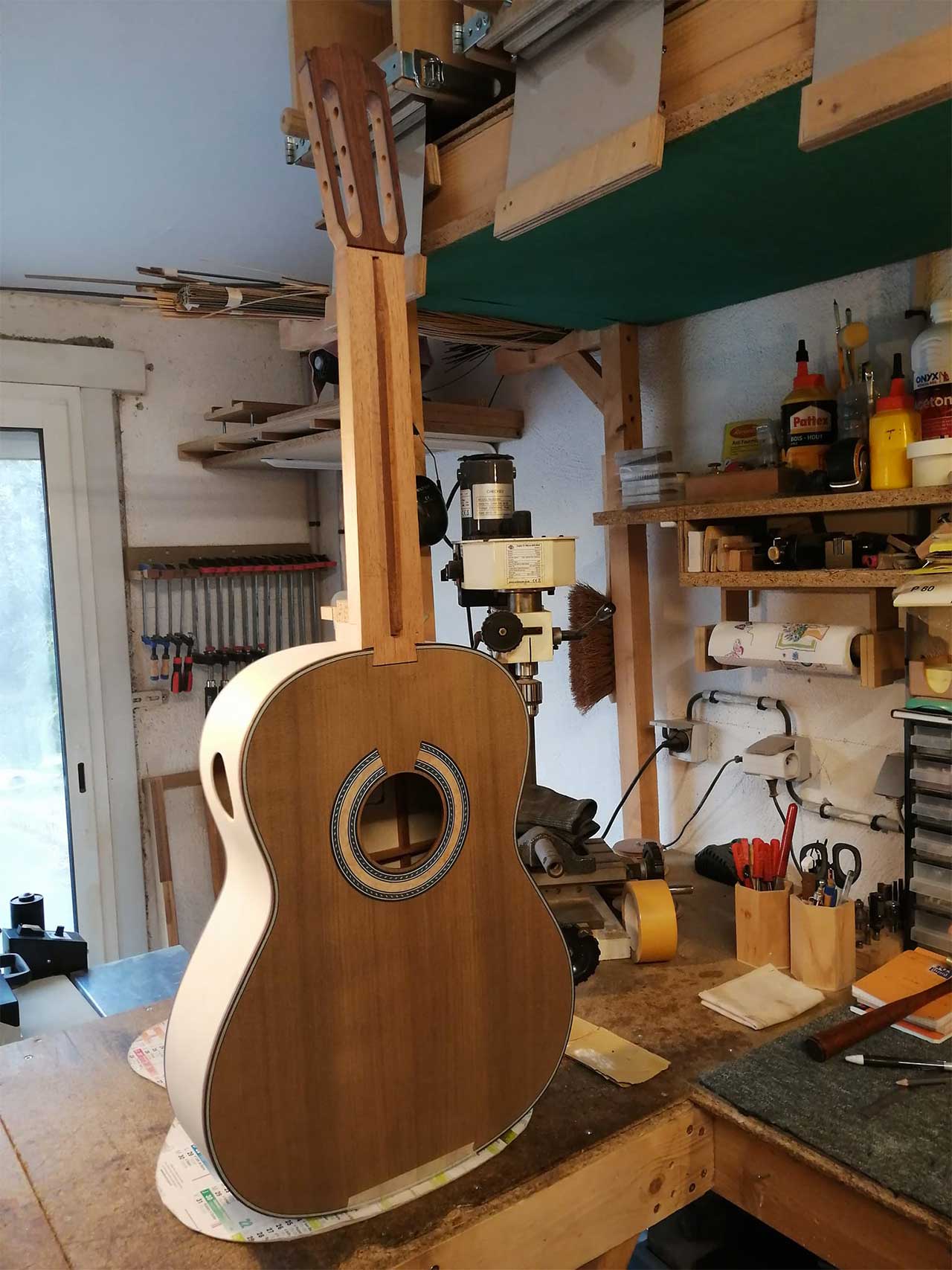
Can you tell us about your flagship models ? Do you have a range that you make regularly ? Do you also make custom designs ?
I find that each model has its own personality and will make you want to play different things.
I won’t go as far as to say that I have flagship models, but I find that my multiscale models, which are currently available in OM and Jumbo formats, offer a really bluffing ease of play for those who try them as well as subtleties on the acoustic level which, in my opinion, make them the ideal instruments for the fingerstyle guitarist.
As far as classical guitar is concerned, I propose three models: the “study” and “concert” models inspired by traditional fan bracing and the “grand concert” model inspired by lattice guitars but without carbon to keep the “all-wood” tone.
The “concert” model is an evolution of the “study” model, but with the “grand concert” model, we are on a totally personal bracing that has evolved by small touches over time and the sound is, according to me, much fuller, we have more of everything if you want, and the sound volume is also much higher, especially once the guitar starts to open up while being played
So it seemed logical to me to name it “big concert”.
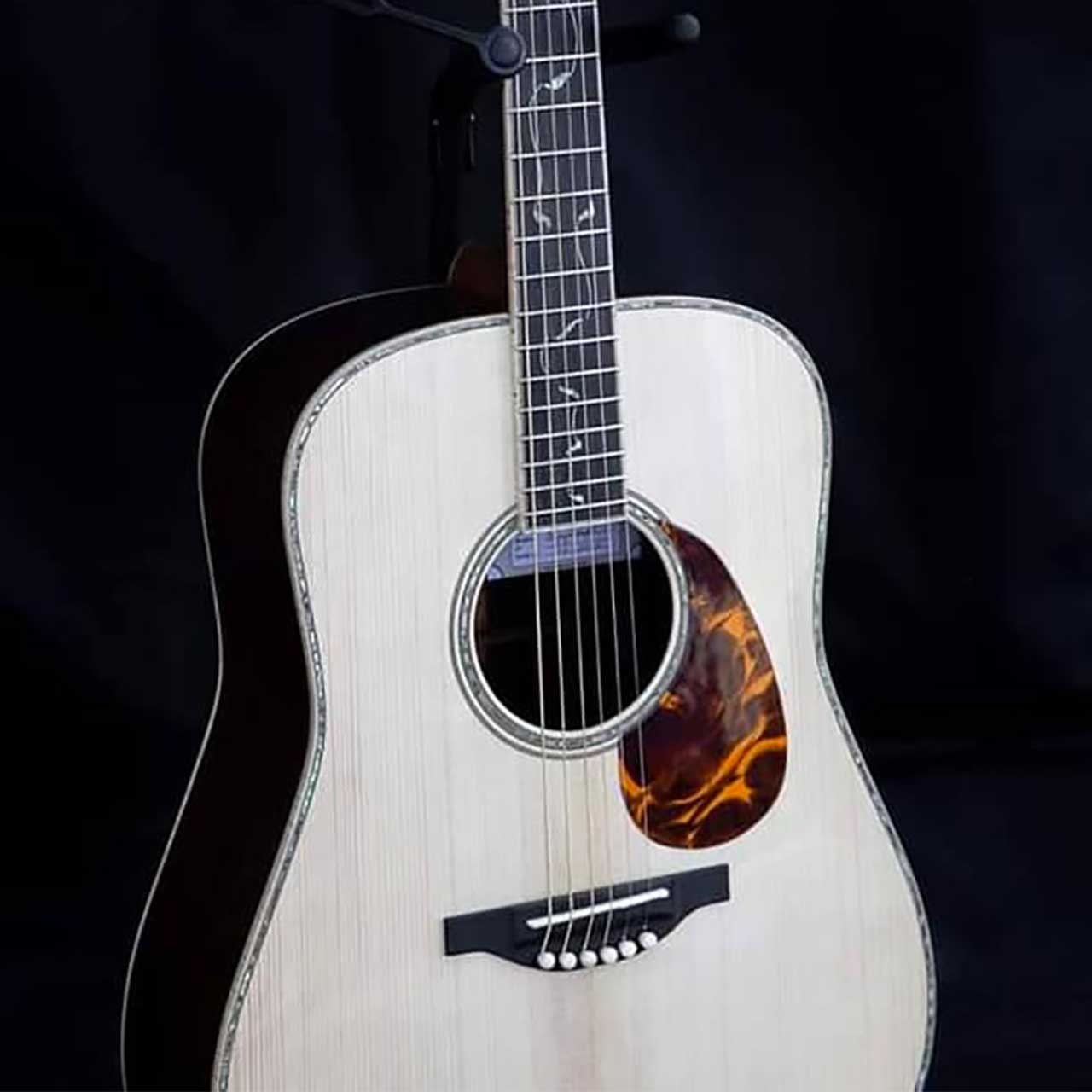
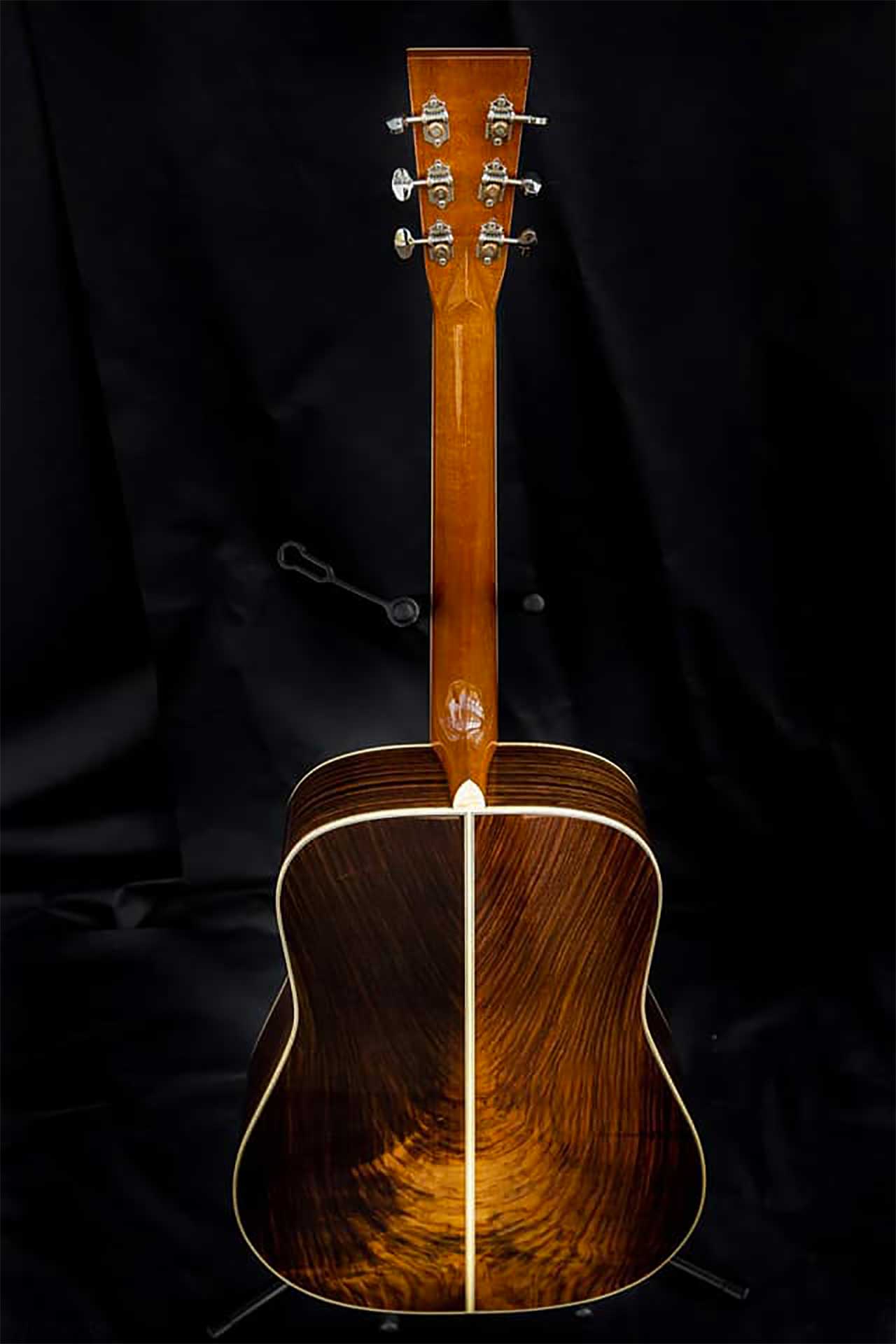
Julien Garcia Luthier – According to you, what is the most impactful thing in the guitar sound ? The woods ? the building technique ?
There are several factors that play a role in the sound of the instrument
The choice of woods will obviously have a great influence on the tone of the future instrument, in particular the choice of the top and back.
But the precision of the assemblies and the geometry are the parameters that differentiate a guitar from an excellent guitar that has length of notes, richness, balance and also sound volume.
There are also other parameters on some building choices that have a lot of impact on the sound like the role of the sides for example and other funny things….
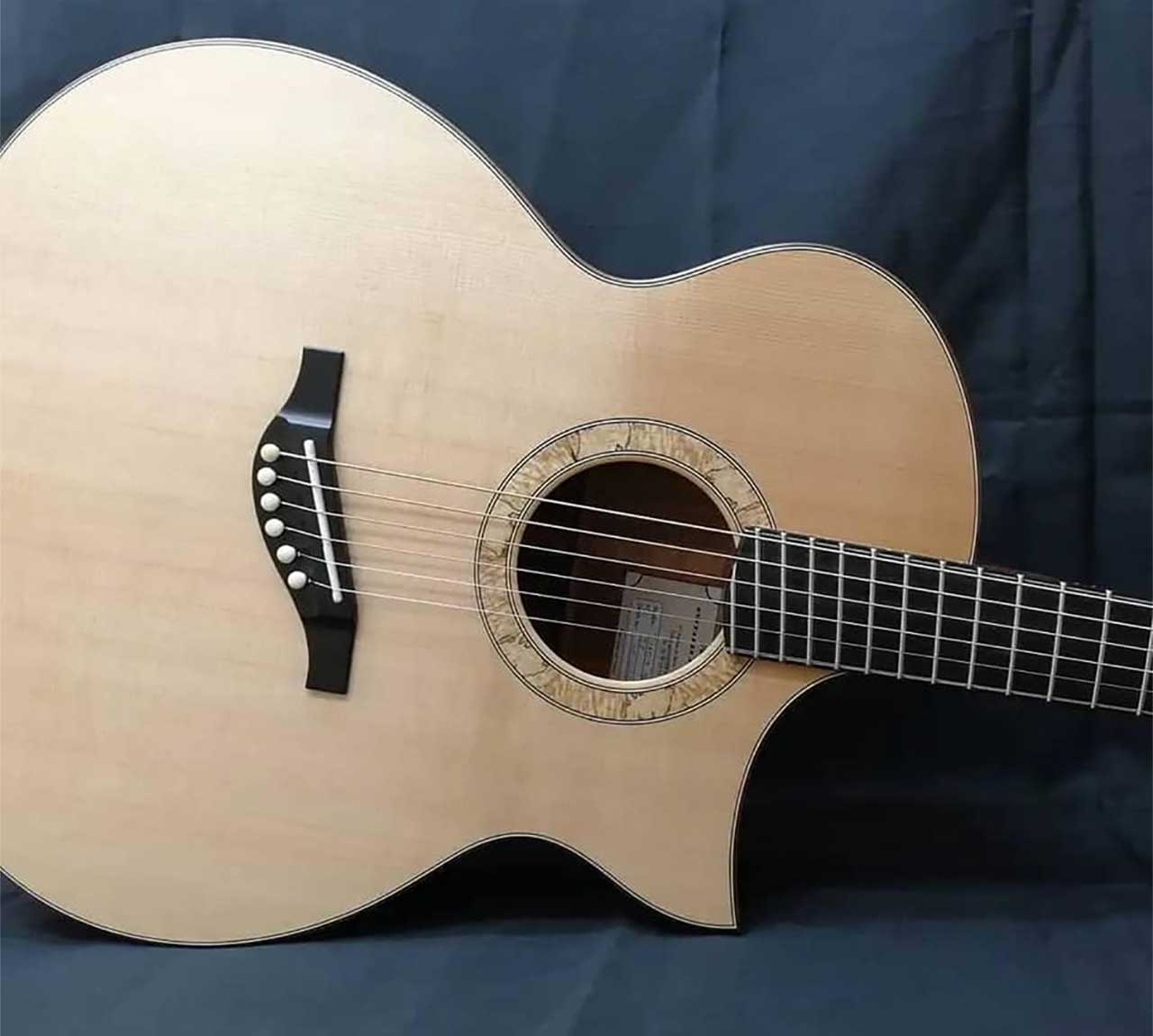
Julien Garcia Luthier – What are your favorite woods ? and how do you help your customers to choose the woods for their future guitar ?
I like to work with all types of wood, some make it more complicated than others, you just have to adapt the method or change the tool to deal with a wood that is a little reluctant.
Concerning the necks, I find that Cedro and South American mahogany are extremely pleasant to work with, not to mention the smell they give off (Cedro in particular) which perfumes the whole workshop.
For the tables I may have a weakness for the alpine spruce but I also use a lot of cedar and even its American cousin the redwood which gives amazing results.
When it comes to orienting a customer towards a particular wood, the first thing to consider is the sound desired for the future of the guitar. The choice of wood comes just after the choice of the body size and possibly the pitch.
When the choice of wood is made, I take out different pieces from my stock that are dry and ready to become a guitar to allow customers to choose the one they prefer aesthetically for the back, sides, bridge and fingerboard, because this is also what makes the charm of a custom guitar.
Most of the time I reserve the choice of the top and the neck for myself because these two elements in particular are particularly important and are not chosen solely on aesthetic criteria.
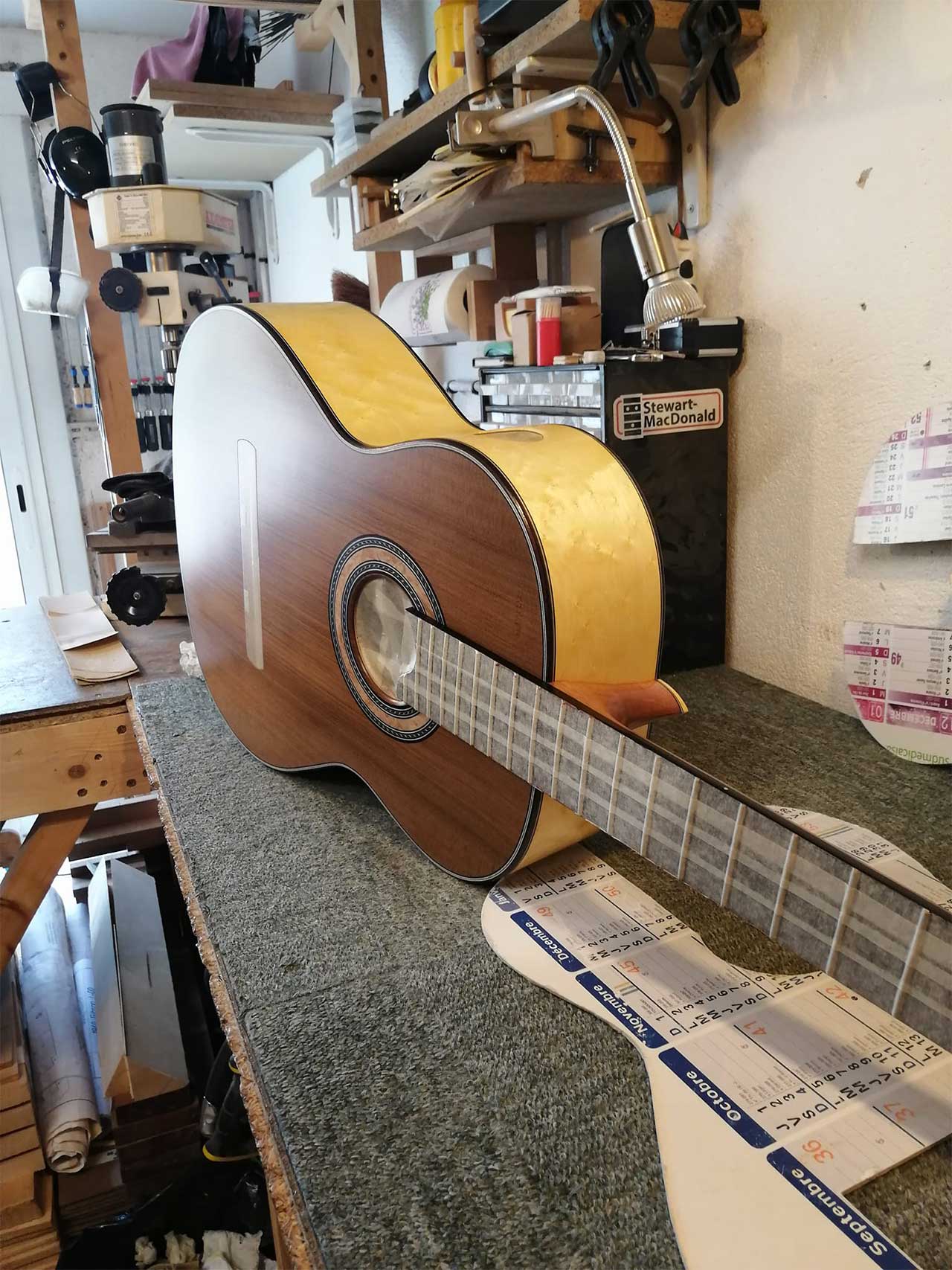
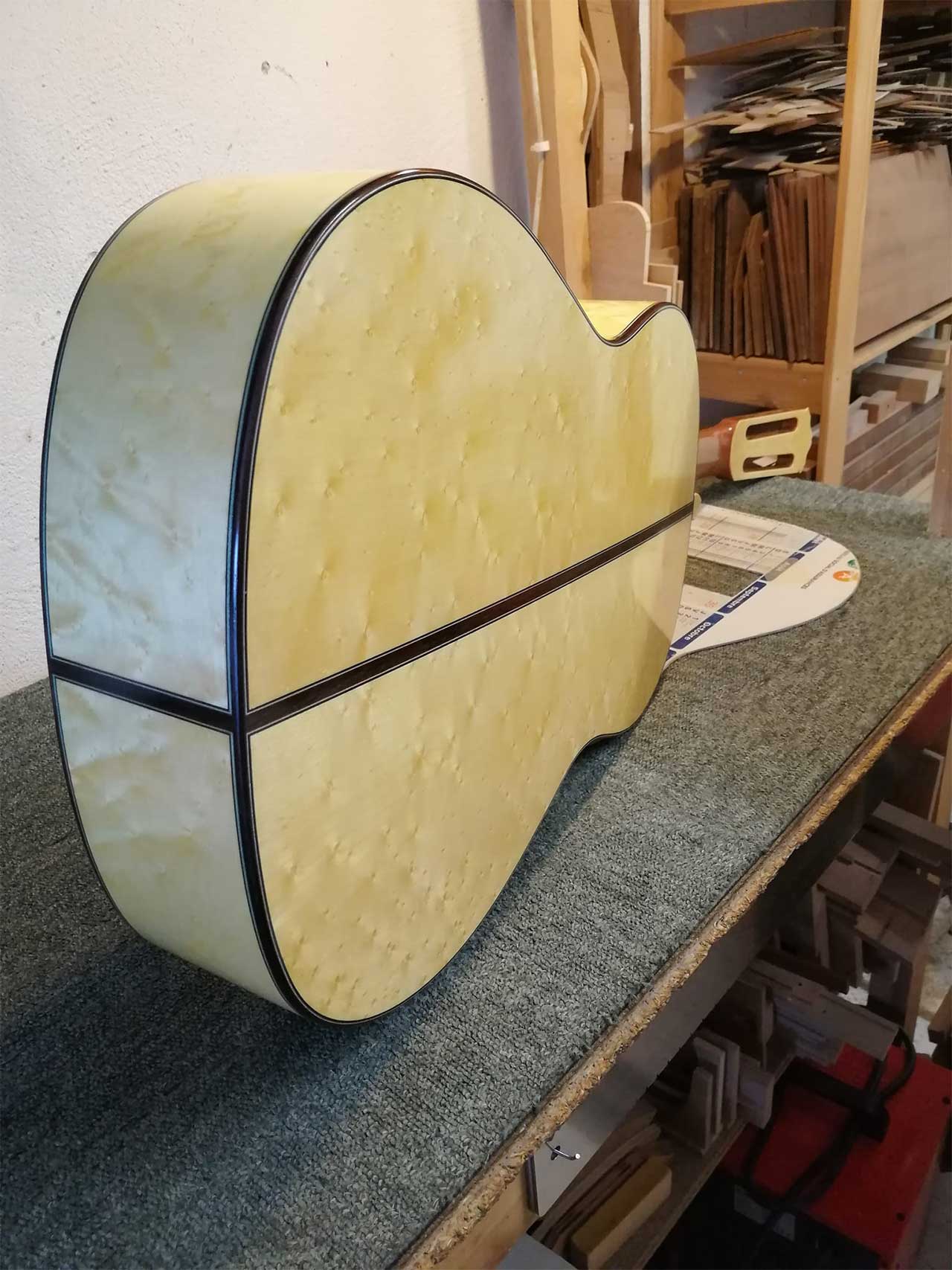
Which luthiers have inspired you and whose work you admire the most?
As far as folk guitars are concerned, I really like the work of French luthiers like Franck Cheval, Richard Baudry, Thomas Féjoz and of course my mentor and trainer Claude Fouquet.
The list is very long and I won’t be able to name everyone because there are classical guitar luthiers and folk guitar luthiers since I make both types of guitars. As far as folk guitars are concerned, I really like the work of French luthiers like Franck Cheval, Richard Baudry, Thomas Féjoz and of course my mentor and trainer Claude Fouquet.
I love North American luthiers with the traditional Martin style of course but also much more modern stuff like Jason Kostal, Julian Gaffney, Michael Greenfield, Jordan Mcconnell and of course Ervin Somogyi. There is also George Lowden in Ireland and many others…
For classical guitars there are luthiers in France like Dominique Field, Daniel Friedrich, Robert Bouchet, who are legendary and whom I admire a lot.
I also like a lot of luthiers abroad like Michael Thames, John Bogdanovich, who is one of my biggest influences for my classical guitars. And of course many others in France and elsewhere.

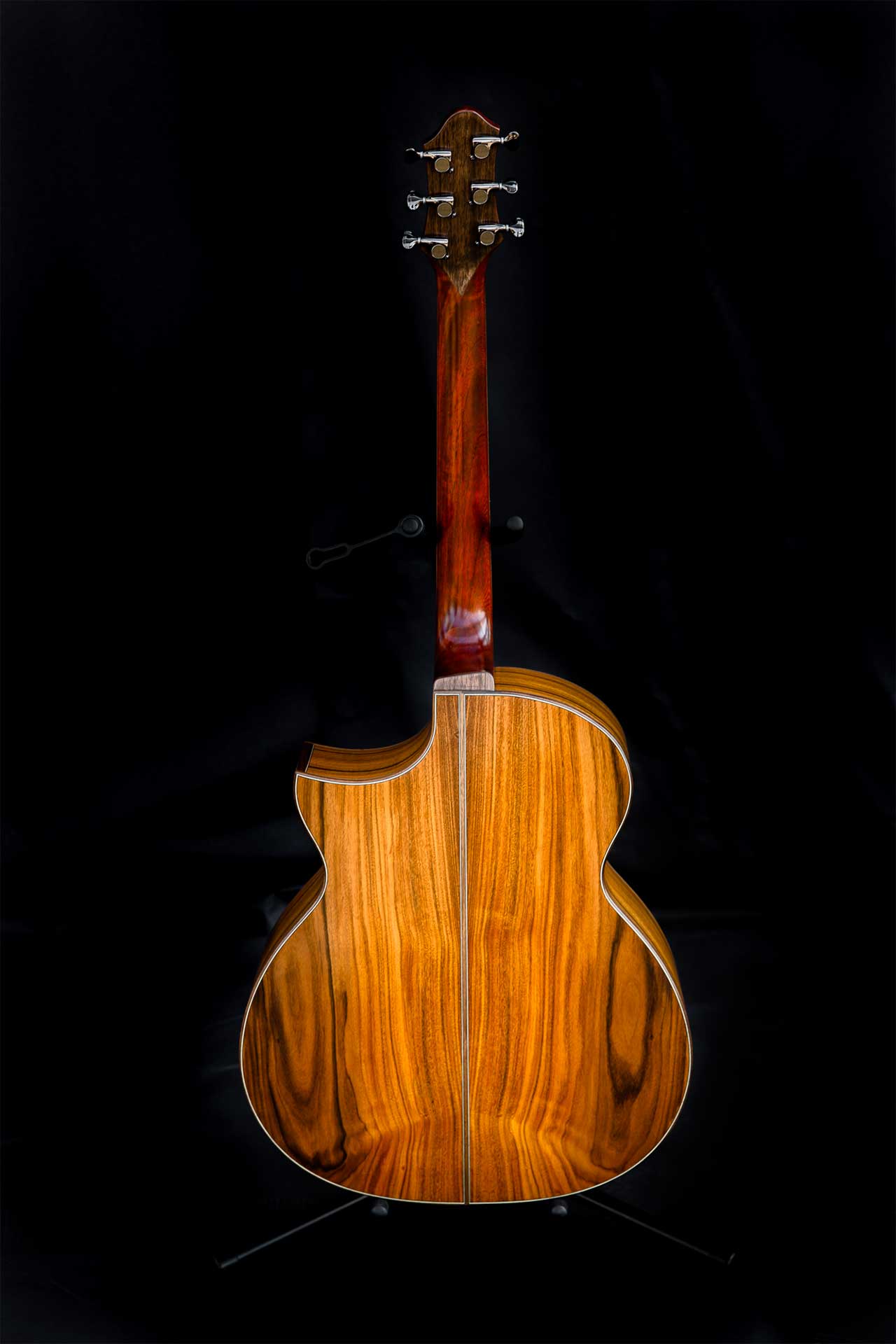
For a custom guitar, can you explain the process? What are your average delays? And how do you advise your customer? What questions do you ask him so that his instrument is perfectly adapted to his expectations?
Usually the customer comes to the workshop to try a few models, which allows me to see and hear him play.
This also allows him to start to orient himself towards a particular model according to the type of sound he has in mind and also sometimes according to his morphology. So the goal is to first define the ideal body size (in the case of a folk guitar) and then see if we can change the pitch, the width of the neck and its profile for an optimal grip. There are also all the questions about your playing style and desired sound to determine the choice of woods as I explained above.
I have also been contacted from a distance, so all the discussions and reflections were done by email or by phone, including the choice of woods on a photo and the complete design on paper of the instrument which was very particular for the time. I met the customer for the first time the day he came to pick up his guitar.
So it is entirely possible to send me a project from a distance without necessarily coming to the workshop if it is not possible.
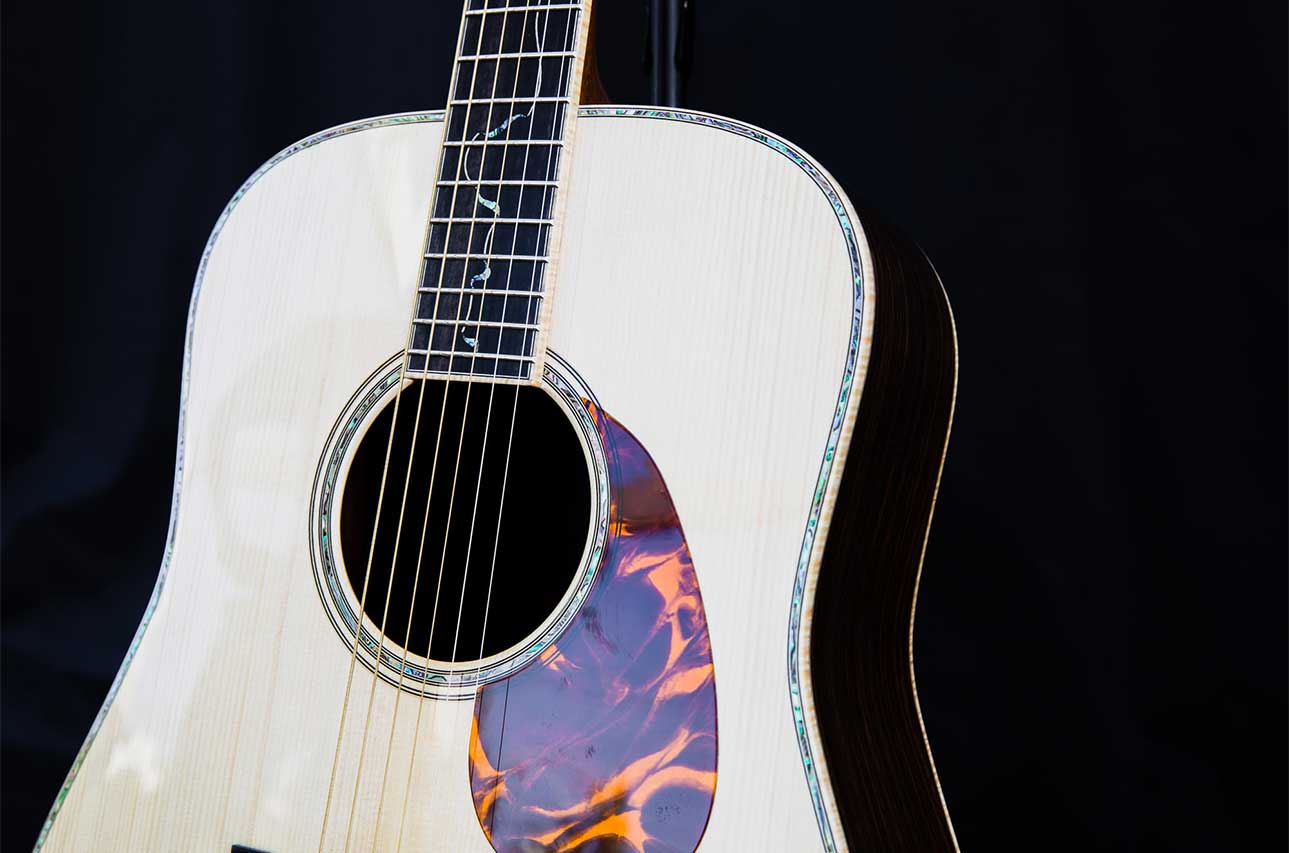
Julien Garcia Luthier -Do you have famous musicians playing on your models ? If so, can you tell us who ??
There are professional guitarists who play my guitars as well as conservatory teachers. There is also my friend Cristobal Pazmino, an Ecuadorian guitarist and composer for whom I made a Venetian cutaway version of my classic “grand concert” model.
There is also Sebastian Cordero who is a fabulous Argentinean guitarist who owns the twin sister of Cristobal’s but in a different essence for the back and sides.
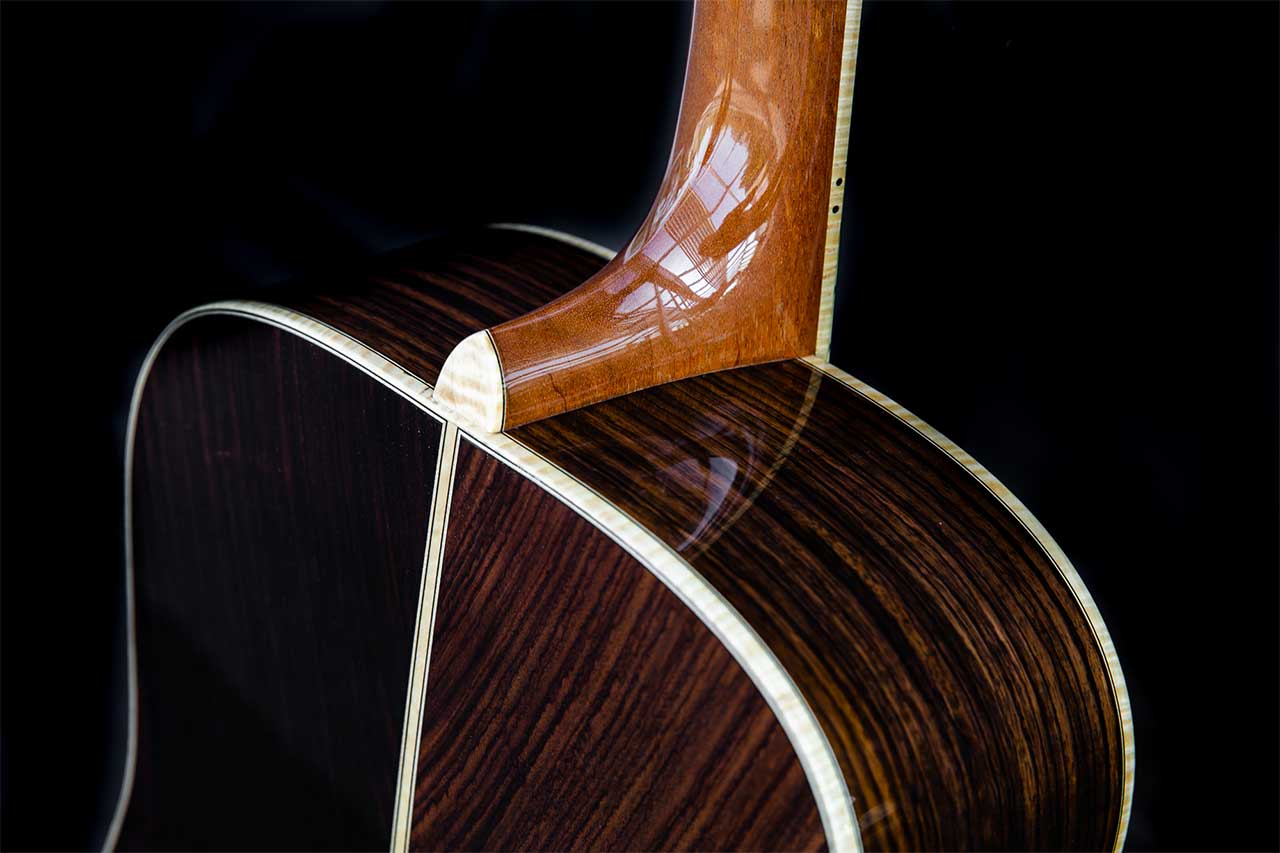
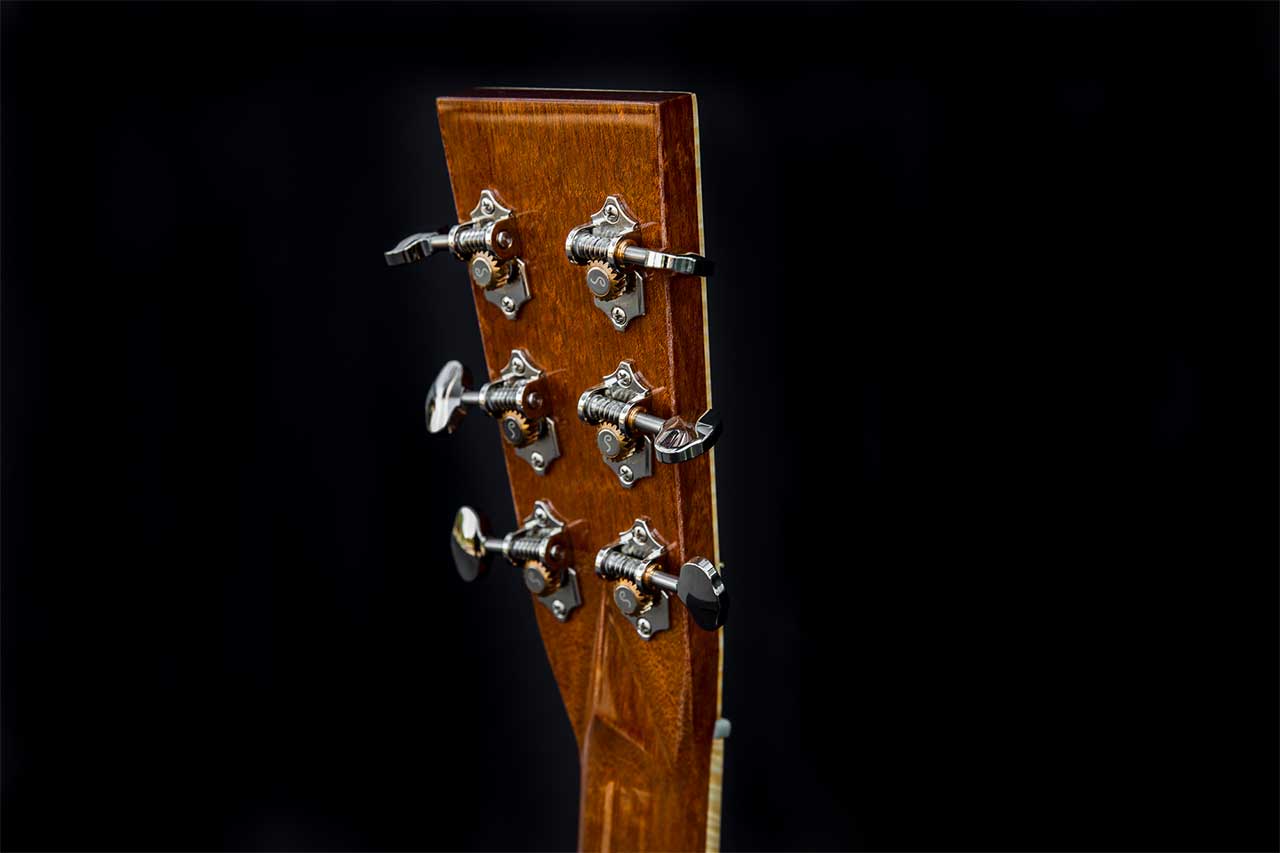
Do you still repair instruments or do you only concentrate on making instruments?
Yes of course, I always offer a repair and adjustment/maintenance service in the workshop.
Luthiers.com brings together luthiers from all over the world. According to you, how is the French lutherie different?
From what I’ve seen since I’ve been in this industry, I have the impression that in French luthiers are constantly trying to innovate, some of them really have very personal and innovative concepts that I have not seen anywhere else to my knowledge.
I like to innovate for my part but I recognize that it is more on the inside of my guitars than on the outside where I like a certain sobriety. But a lot of French luthiers dare to shake up the codes and this contributes to the evolution of this fabulous instrument.
I also find that in France many luthiers are trying to adopt a more eco-responsible approach by using more and more European or French woods for various parts of the instrument.
French lutherie is also, in my opinion, a heritage of excellence that comes from our forefathers who are still considered today as references in France and throughout the world.
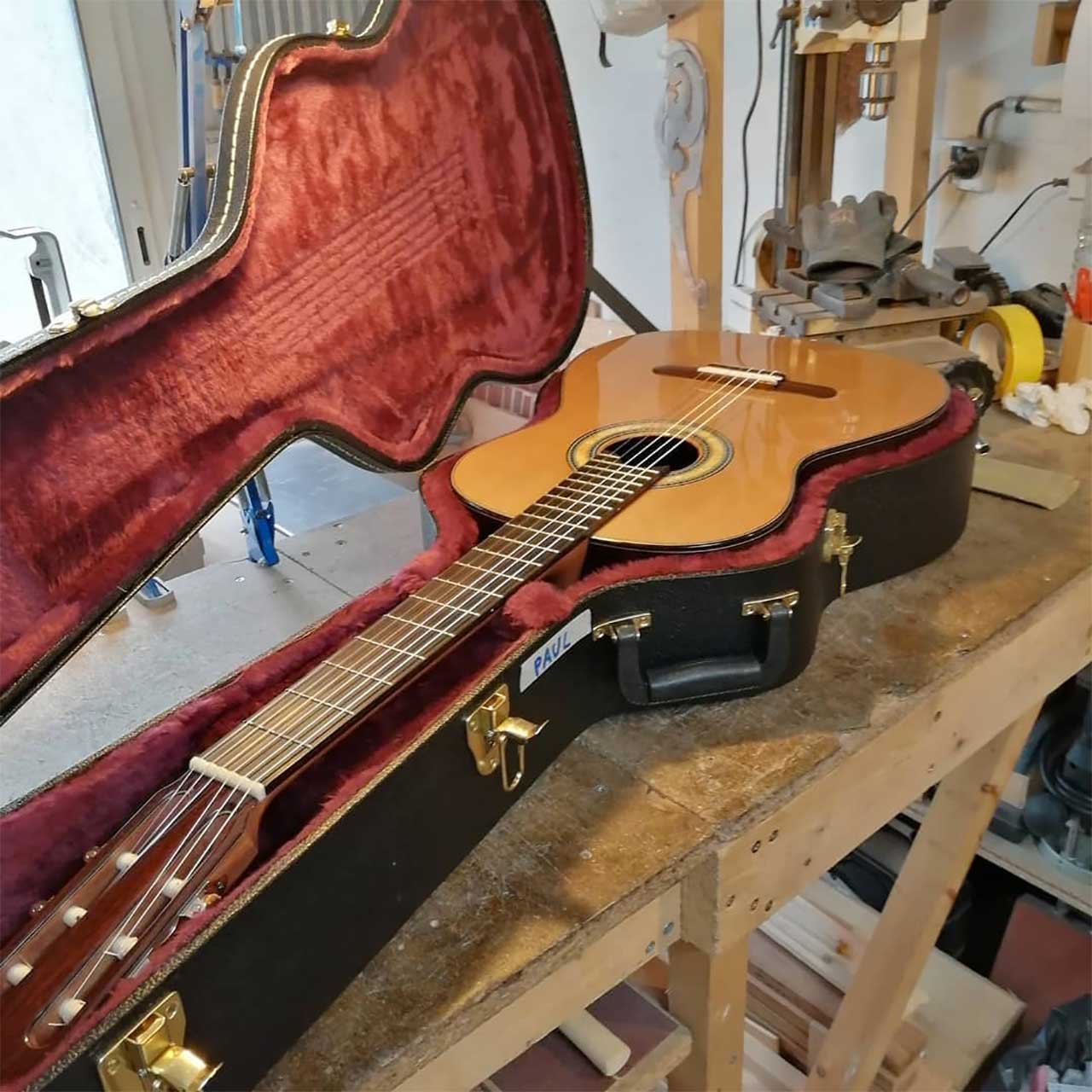
Where can we buy your instruments? Can we try them somewhere?
I don’t have any reseller so to buy one of my instruments you have to contact me directly.
It is possible to try them at the workshop or on the exhibitions and festivals in which I participate like tSalon International de Toulouse, Les rencontres guitares de Ferrière sur Arriège.
I was also present in Issoudun last year, there is the Drôme de guitare festival in Valence for classical guitar lovers. I was also present last November in Juvisy sur Orge for the Guitar’Essonne festival.
So many events on which I will try to be present again this year.
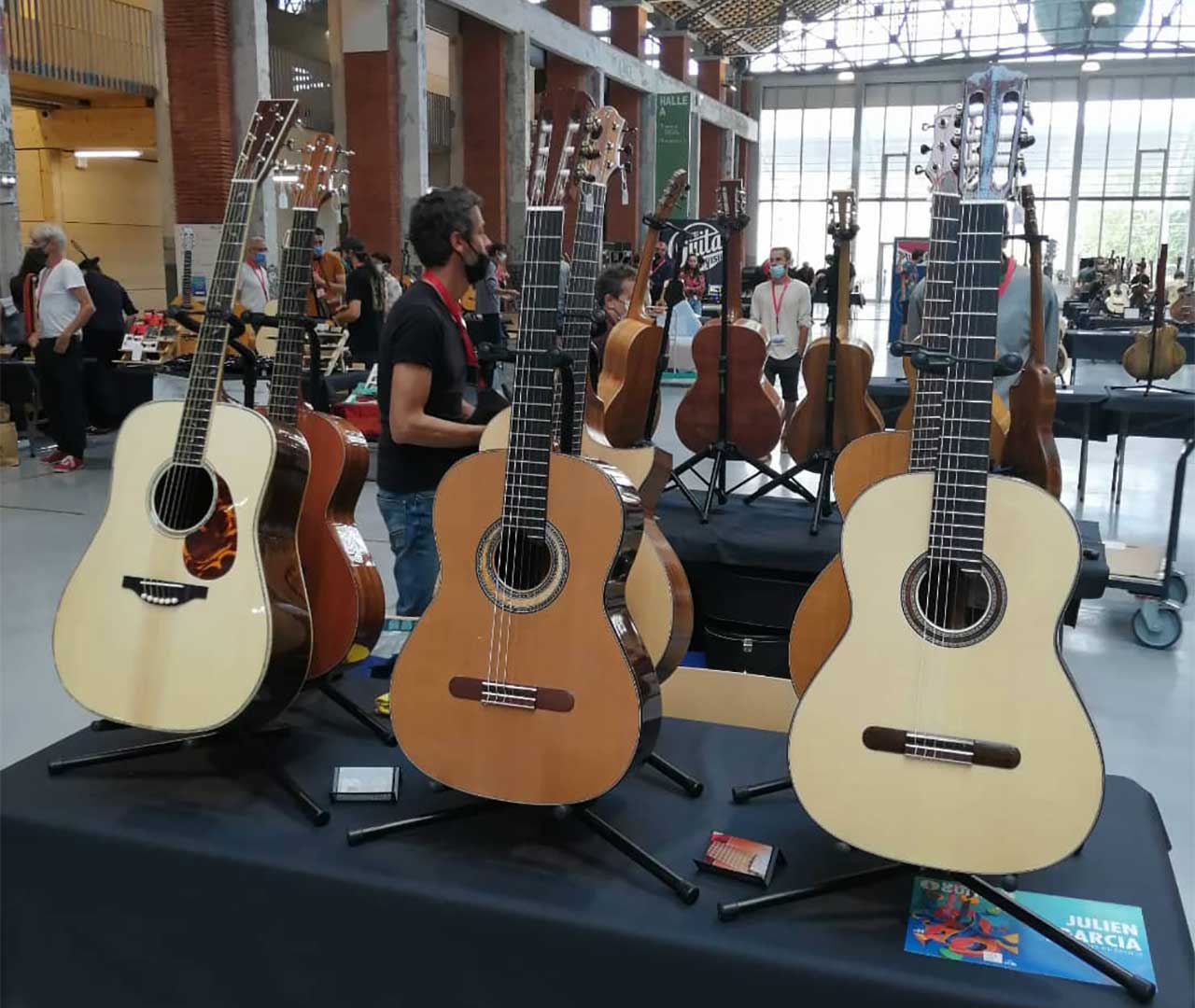
You can contact Julien Garcia
using the contact form on his personal page on Luthiers.com here :
https://luthiers.com/listing/julien-garcia-acoustic-guitars/
We also invite you to follow him on his various social networks:
- Facebook: https://www.facebook.com/Julien-Garcia-Guitares-acoustiques-696326693851480
- Instagram: https://www.instagram.com/julien_garcia_luthier/
- Website: https://juliengarciaguitares.fr
Julien Garcia Luthier Interview 1 Background
In the coming weeks, as for others luthiers for plucked string instruments, luthiers for bowed string instruments, amps & effects makers, wood & supplies dealers, lutherie events, jobs, schools & teachers subscribers on our site, you will be able to follow our series of mini-interviews dedicated to the fascinating world of luthiers.
See you soon…
#luthiers
Subscribe to the newsletter!
Subscribe to our newsletter to follow all our news and those of our luthiers.
If you are passionate about the world of luthiers, join us!